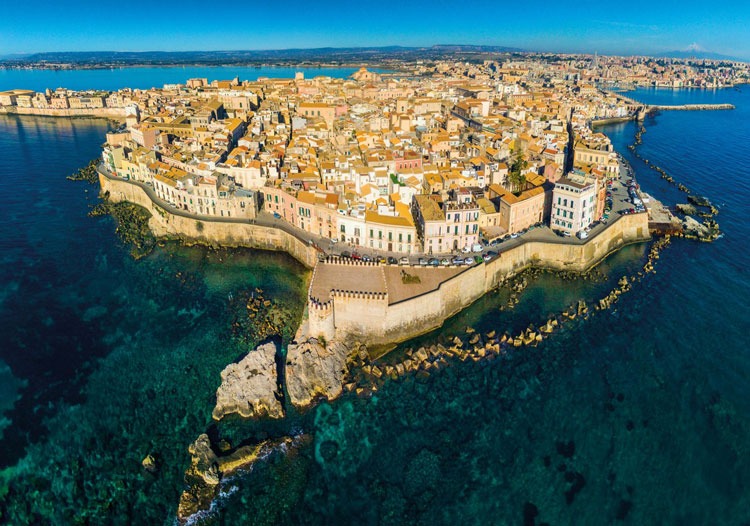We have chosen the Island of Ortigia, in the Province of Syracuse as the setting for our celebration. The island is an extremely popular place for tourism, shopping, and entertainment. We expect to have a wonderful time and make lasting memories. Click here for more information
Ortigia (Ortygia), a small island, is the historical centre of the city of Syracuse, Sicily. The island, also known as Città Vecchia (Old City), contains many historical landmarks. The name originates from the Ancient Greek ortyx, which means “Quail”. Ortygia, being an island just off the coast, was easily transformed into a natural fortress with harbors and was big enough that it could hold a significant population in ancient times. Therefore, the history of Ortygia is synonymous with the early history of Syracuse. Ortygia is located at the eastern end of Syracuse and is separated from it by a narrow channel. Two bridges connect the island to mainland Sicily.
Syracuse (Siracusa) is a historic city on the island of Sicily, the capital of the Italian province of Syracuse. The city is notable for its rich Greek history, culture, amphitheatres, architecture, and as the birthplace of the preeminent mathematician and engineer Archimedes. This 2,700-year-old city played a key role in ancient times, when it was one of the major powers of the Mediterranean world. Syracuse is located in the southeast corner of the island of Sicily, next to the Gulf of Syracuse beside the Ionian Sea.
The city was founded by Ancient Greek Corinthians and Teneans and became a very powerful city-state. Syracuse was allied with Sparta and Corinth and exerted influence over the entirety of Magna Graecia, of which it was the most important city. Described by Cicero as “the greatest Greek city and the most beautiful of them all”, it equaled Athens in size during the fifth century BC. It later became part of the Roman Republic and the Byzantine Empire. Under Emperor Constans II, it served as the capital of the Byzantine Empire (663–669). After this Palermo overtook it in importance, as the capital of the Kingdom of Sicily. Eventually the kingdom would be united with the Kingdom of Naples to form the Two Sicilies until the Italian unification of 1860. In the modern day, the city is listed by UNESCO as a World Heritage Site along with the Necropolis of Pantalica. In the central area, the city itself has a population of around 125,000 people. Syracuse is mentioned in the Bible in the Acts of the Apostles book at 28:12 as Paul stayed there. The patron saint of the city is Saint Lucy; she was born in Syracuse and her feast day, Saint Lucy’s Day, is celebrated on 13 December.
